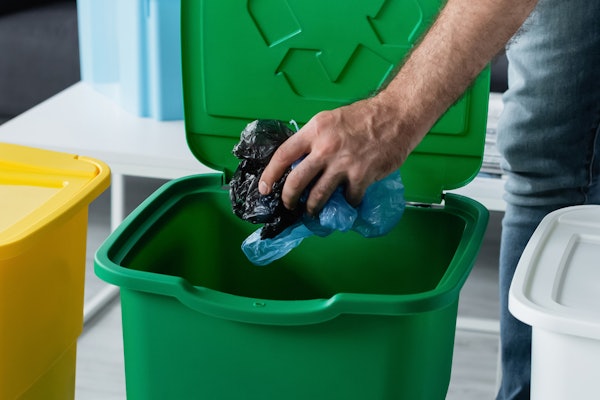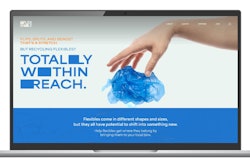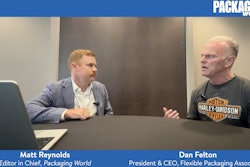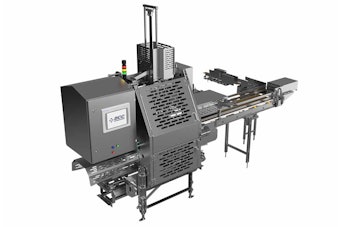Using low cost as their marketing hammer, makers of yesteryear’s generic products used no-frill package graphics, printing product name and ingredients information in one or two colors. Today, however, retailers are relying more on packaging to market their store brands/private-label offerings as an alternative to national brands. And due to a combination of economics, package shelf appeal, and other factors, store brand awareness and sales are growing.
Last Spring, Group 360 Worldwide, a design and strategic marketing communications firm, sponsored a first-ever Store Brands Decisions Packaging Design Retailer Benchmarking Survey, conducted by Store Brands Decisions, a media provider of information for store brands executives.
Conducted last April and May, the survey aimed to help retailers benchmark their practices and plans against the broader store brands retailing market. The survey sought to provide recommendations to retailers, manufacturers, and design agencies within the consumer packaged goods (CPG) segment. Survey respondents included 36 companies operating more than 58,000 stores that generate more than $900 billion in annual retail sales, and included retailers from the U.S., Canada, and Korea.
Mark Rutter is president and CEO, Group 360 Worldwide, which helps its clients’ companies deliver their brands to market through a single, strategically focused point of contact, including strategy, content, packaging, marketing, and related functions. He notes, “Our business is to help grow both CPG and store-brand clients. I refer to them as store brands rather than ‘private label,’ a term that could be interpreted like a private club. There are so many retail stores that have their own line of products. Nowadays, it’s not good enough, let’s say in the salty snack category, to have just Frito-Lay products,” says Rutter. “You also need to have all the other brands out there, including store brands, which now are very popular because of their improved reputation. Store brands are an increasingly powerful category. Long gone are the generic products that people used to think about, mostly due to the power of the design and the promise and characteristics of store brands.”
Costs have been a significant factor in store-brand growth. Says Rutter, “Economic downturns make lesser-priced products more attractive to people making less money. So retailers need to grow their own brands as well as national brands.”
Asked if retailers make a different profit on their own brands versus national brands, Rutter says several factors must be weighed. “My guess is they probably do because they control their own supply chain more than they do with national brands. But they sell for a lesser price, so their margins could be very similar,” he says. Another dimension here is that consumers may shop for a national brand in one product category, but a store brand in another segment.
Executives moving to store-brand companies
One of the survey’s key findings was that 57% of shoppers are purchasing store brands, up from 36% compared to 10 years ago. John Failla, Store Brands Decisions’ president and editorial director, says several factors are behind that purchasing change. “Ten years ago, the business was unsophisticated and was dominated by generic products. There was a can of soup that said ‘soup’ on it,” he says. “Retailers essentially had two tiers of product: the national-brand equivalent, such as a bottle of shampoo that looked like Head & Shoulders, and the national brand. The generic version appealed almost exclusively to a price-driven shopper.” He says store-brand sales peak during recessionary periods, but tend to plateau afterwards.
“What happened in the last five years in particular, and what we think is going to drive substantial growth going forward, is this incredible influx of classically trained consumer products executives leaving companies such as Procter & Gamble, Unilever, ConAgra, and Kraft, and taking senior management positions at retailers like Kroger, Safeway, Walgreens, and Target, with the goal of developing store brands for those retailers,” Failla says. “So, now you see well-developed, well-positioned store brands driving incremental growth for retailer products.”
Store-brand designations
Failla defines three tiers of store brands. He describes them as “generic, which are all about price; a national-brand equivalent that says it’s as good as the national brand but costs less; and then there is the premium, private label, whose attributes are marketed to better those of the national brand.”
Before this study, Failla believes, “there was no information out there on best practices and on what other retailers were doing. So, the focus of this study was not to advocate selling store brands versus national brands, but to give retailers an idea of how the packaging design was being managed within their peer groups so that they could make better decisions.”
Design, development, and execution
Three key packaging-centric areas covered in the study are the approach to packaging design, strategy development, and execution. “One of the trends we saw was that in all three areas, the percentage of retailers hiring specialized outside resources was increasing. The area of strategy development showed the largest percentage increase in the use of outside resources. Retailers realize that if they are going to move their store-brand business forward, they are going to have to get specialized outside resources,” says Failla.
Greater reliance on technology to help manage the package design process is also rising. “Believe it or not, there are still retailers who are managing their workflow on a package redesign with spreadsheets,” he says. “There is a lot of information changing hands between the vendors and the retailers, and between the design agency and the retailer. CPGs have used technology to manage this process for quite some time. Now retailers are in a position of catching up.”
Group 360’s Rutter says, “Store brands are catching up and will adapt quickly to some of the newer technologies.” He points to a system that employs Smartphone technology to link packages and in-store promotions, sampling programs, and Web sites as examples. “So when you look at the study and see that the people who participated represented $900 billion dollars in sales over 58,000 stores, it’s clear that there exists a powerful distribution system.”
Asked what trends he sees developing in the over-the-counter pharmaceutical and nutraceutical areas, Rutter says, “The possibilities with OTC store brands are fascinating because the next big step involves all of those pharmaceutical product patents running out. Obviously, there will be opportunities for retailers to be able to market all of those products in a different way altogether.
“The key question is how do they make their own OTCs as attractive as the national brands? In the case of pain relievers, for example, how does someone like Kroger or Safeway or Walgreens make those in clear, attractive ways that the consumer sees as having the same efficacies as the name-brand drugs? There will be opportunities for the retailer because packaging design has a great deal to do with how people view or perceive the product that they are buying.” To learn more about the full report, or to purchase it, visit www.storebrandsdecisions.com/research_checkout.php


























